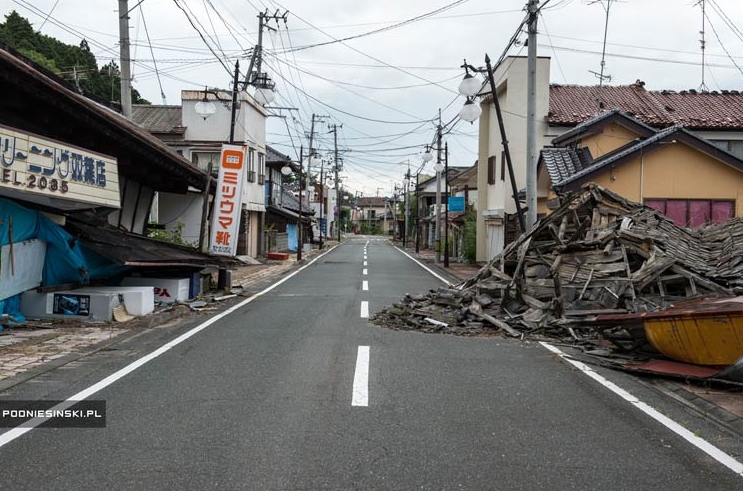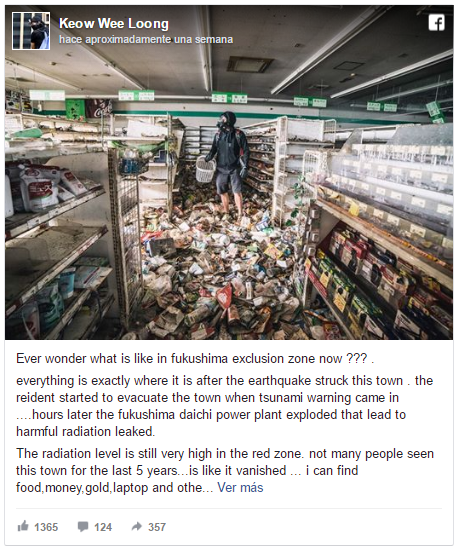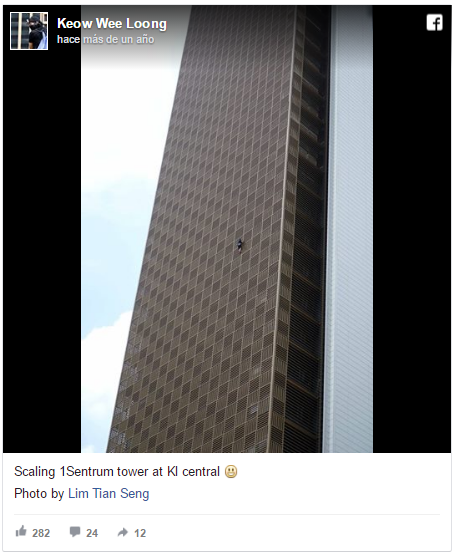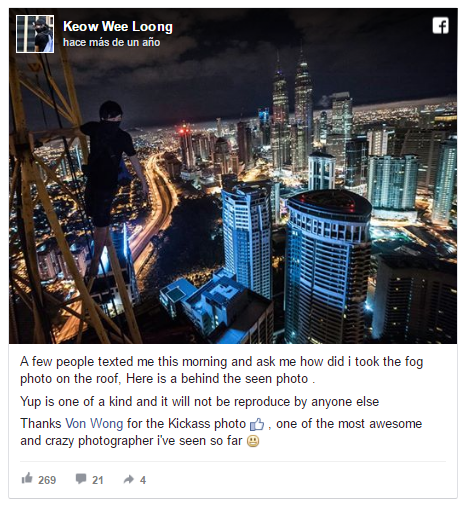Ever wonder what is like in fukushima exclusion zone now ?
07/18/2016 / By fukushima

Recent pictures of the Fukushima exclusion zone by freelance photographer Keow Wee Loong, which have gone viral on social media and published by media organisations likeTIME and CNN, are just the latest to stoke the fires in the raging debate about the ethics of photography. Mr Keow, a 27-year-old Malaysian photographer based in Thailand, went into the “red zone” without a permit from the relevant authorities. He was clad in just a hoodie, shorts, sandals and what looks like a gas mask.
(Article by Yusof Najeer)

The exclusion zone was set up following the Tohoku earthquake and tsunami in 2011, which led to the release of radioactive materials from the Fukushima Daiichi nuclear plant. As a result, the Japanese government declared a nuclear emergency and evacuated people within a 20 km radius around the plant. The radiation levels at the core of this zone, which is where Mr Keow spent 13 hours, have reached up to 9.4 sieverts – this could kill a person in an hour.
Mr Keow’s foray into the exclusion zone in Japan has drawn criticism by readers and professional photographers alike, with one open letter, which has been shared over 5,000 times, calling it a “a cheap, disrespectful publicity stunt that oozes desperation in both its vision and execution”.
The letter writer also pointed out that the stunt was disrespectful to those who were forced to leave their homes due to the disaster.
TMG spoke to two professional freelance photographers, who called Mr Keow “irresponsible”.

When TMG contacted Mr Keow, he said: “Initially, I approached the media agencies to sell my work but nowadays, I don’t. My photos go viral and they come to me to pick up my story. Most foreign press pay me and it usually is sufficient to refund the amount I spend for each project.” His earnings from this Fukushima project was sufficient to cover his travel fare and the cost of a month’s stay in Japan, he added, but refused to disclose the amount he spent.
“Before I went there, the authority told me that I needed a special permit to visit this town and it takes three to four weeks to get the approval from the local council. Well, too much bureaucracy bull**** for me. So, I just sneaked into the forest to avoid cops on the road,” Mr Keow wrote in his Facebook post, on July 10, recounting his venture. To date, his post has received about 45,000 likes and 70,000 shares.
It is this devil-may-care attitude that has riled others, including fellow photographers in the industry.
The photographer disregarded governmental rules and trespassed into a restricted and dangerous zone, said Mr Stefen Chow, a 36 year-old professional photographer and film maker. “Rather than saying he is plain wrong, I would question his motives. Is it to uncover a truth that people need to see? Is there education to this, and people can benefit from the knowledge?” He added that the pictures were not “aesthetically professional” and were nothing short of attention-seeking.
It is this devil-may-care attitude that has riled others, including fellow photographers in the industry.
The photographer disregarded governmental rules and trespassed into a restricted and dangerous zone, said Mr Stefen Chow, a 36 year-old professional photographer and film maker. “Rather than saying he is plain wrong, I would question his motives. Is it to uncover a truth that people need to see? Is there education to this, and people can benefit from the knowledge?” He added that the pictures were not “aesthetically professional” and were nothing short of attention-seeking.
“Rather than saying he is plain wrong, I would question his motives. Is it to uncover a truth that people need to see? Is there education to this, and people can benefit from the knowledge?”
“This was plain reckless, offensive and irresponsible,” said Mr Chow.
Besides the ethical issues pertaining to trespassing, Mr Keow also crossed moral boundaries to place himself, and potentially others around him in danger. This is rather unusual for freelance photographers as they “usually go to a location only after being assigned or having successfully pitched it to an editor or client.”
“The stories assigned or approved would be after careful consideration of the risks and the news value of the story,” said Mr Joseph Nair, a 30 year-old professional photojournalist who freelances for news organisations and wire agencies such as the Associated Press.
No big deal?
Mr Keow worked with a Singaporean friend to plan the shoot but ventured into the area alone, he said. He feels that he posed no danger to anyone around him. “When I exited the red zone, I proceeded to a booth within the green zone, to check the radiation count in my body. The radiation level was equivalent to a cancer patient who goes through radiotherapy,” said Mr Keow. As such, he said, he would not cause harm to people around him.
When asked why he decided to proceed without appropriate protective equipment, the self-funded freelancer said: “I do not wish to expose myself to the radiation. I accidentally left behind the envelope containing about 300,000 Yen, at Shinjuku train station. Since I lost my money, I could not get a protection suit. As a photographer, I only have the option to do it or waste an opportunity.” According to him, visitors can enter the red zone for five hours, without getting any serious health effects – he was there for 13 hours.
But he wasn’t completely immune though. In his Facebook post, Mr Keow described the effects he felt upon entering the red zone: “I could feel a burning sensation in my eyes and a thick chemical smell in the air.”
Mr Keow had been fined previously for illegally scaling the Sentrum Tower at Kuala Lumpur Sentral by climbing the facade of the building without any safety lines.
Mr Nair feels that what Mr Keow did in Fukushima might encourage young photographers to join the “urban explorers” club – those who photograph themselves doing dangerous stunts.
“It’s about being there and nothing else. They don’t have the same ethical codes as photojournalists,” said Mr Nair. This trend is picking up among Singaporean youngsters too, as they bypass security to climb tall buildings and photograph themselves standing or hanging off the edge of these buildings.

Besides risking their own lives, some photographers can endanger the environment too. In an attempt to capture dramatic shots of wildlife in action, some Singaporean wildlife photographers have resorted to baiting. They create photo opportunities by stuffing fishes with styrofoam, causing them to float, so as to bait birds who swoop down for an easy meal. The ingested styrofoam particles can be toxic to the birds and they can remain within the animals for years.
Such trends in modern day photography seem to be based solely on gaining fame and fail to provide the public with valuable insights. Yet, due to the visual appeal of stunting, boosted heavily by social media, many are starting to latch onto this trend.
Is photography still being used as a tool to provoke further inquiry? Or is it just for the mere purpose of gaining attention?
“I personally think it’s exploitation,” Mr Nair said.
Read more at: themiddleground.sg
Submit a correction >>
Tagged Under:
environment, Fukushima, nuclear, radiation
This article may contain statements that reflect the opinion of the author
RECENT NEWS & ARTICLES
COPYRIGHT © 2017 FUKUSHIMAWATCH.COM
All content posted on this site is protected under Free Speech. FukushimaWatch.com is not responsible for content written by contributing authors. The information on this site is provided for educational and entertainment purposes only. It is not intended as a substitute for professional advice of any kind. FukushimaWatch.com assumes no responsibility for the use or misuse of this material. All trademarks, registered trademarks and service marks mentioned on this site are the property of their respective owners.




















